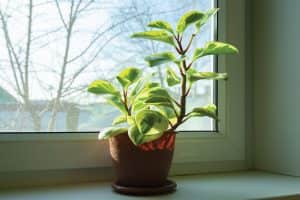Skip the compost bucket or garbage can and grow beautiful houseplants, kitchen window displays and future garden additions from your leftover vegetables and fruits.
Kitchen scrap gardening is a fun winter activity. Practice the concepts of reusing and recycling while experimenting with leftover plant parts. Many fruits and vegetables can be regrown with a little water and patience.
Avocado
After enjoying an avocado, clean the seed and remove the seed coat (thin brown layer). With the pointed top of the avocado seed facing up, insert three toothpicks equally spaced into the top third.Using a clear jar of water, rest the toothpicks on the rim with water touching the bottom of the seed. Change the water every couple of days. Watch for roots and sprouts to appear – this may take a month or more. Once the roots have filled the jar and the green shoot is 6 to 8 inches tall, plant in a container of potting soil. During summer months, your new avocado plant can be added to your outdoor patio or landscape. Bring it inside as a houseplant when temperatures are below 45 F. While you may grow a tree up to 5 feet tall, it may take three or more years for fruit to develop and will be smaller than commercially available.
Pineapple
Start with a ripe pineapple that has healthy, green leaves. Cut the fruit a half inch below the cluster of leaves. Remove the rind and remaining fruit, leaving the tough core attached to the leaves. Expose an inch of the bottom of the stalk by pulling off a few of the lower leaves. Allow the green top to dry for a week. Plant the top one-inch deep in a mixture of peat, sand and perlite. Place the container in bright, indirect light and keep the soil moist, but not soggy. Roots should develop in six to eight weeks. Place the container outside during periods of frost-free weather. A new fruit will develop on the plant in two to three years.
Celery
Instead of discarding the bottom of a celery stalk, save it to grow again. Cut 2 inches above the bottom of the stalk. Place the celery base in a shallow bowl with 1 inch of water, maintaining the level at all times. Change the water every day to keep it fresh. Roots from the bottom of the base and leaf growth from the center of the top will appear in a few days. After two to three weeks, the celery base is ready to transfer to a planter of potting soil, covering it completely except for the center leaf tips. Other plants that can be grown similarly include lettuce, bok choy, cabbage, greens of carrots, turnips, radishes and beets.
The process of growing plants from leftovers can be fun and rewarding but will take patience. While the commercial production of vegetables and fruit consists of more complicated processes (like grafting), and what we grow at home may not match the aesthetics of what we buy in the store, these experiments will leave you wanting to grow new things in your home or garden this year. Recycle, reuse … and regrow!








